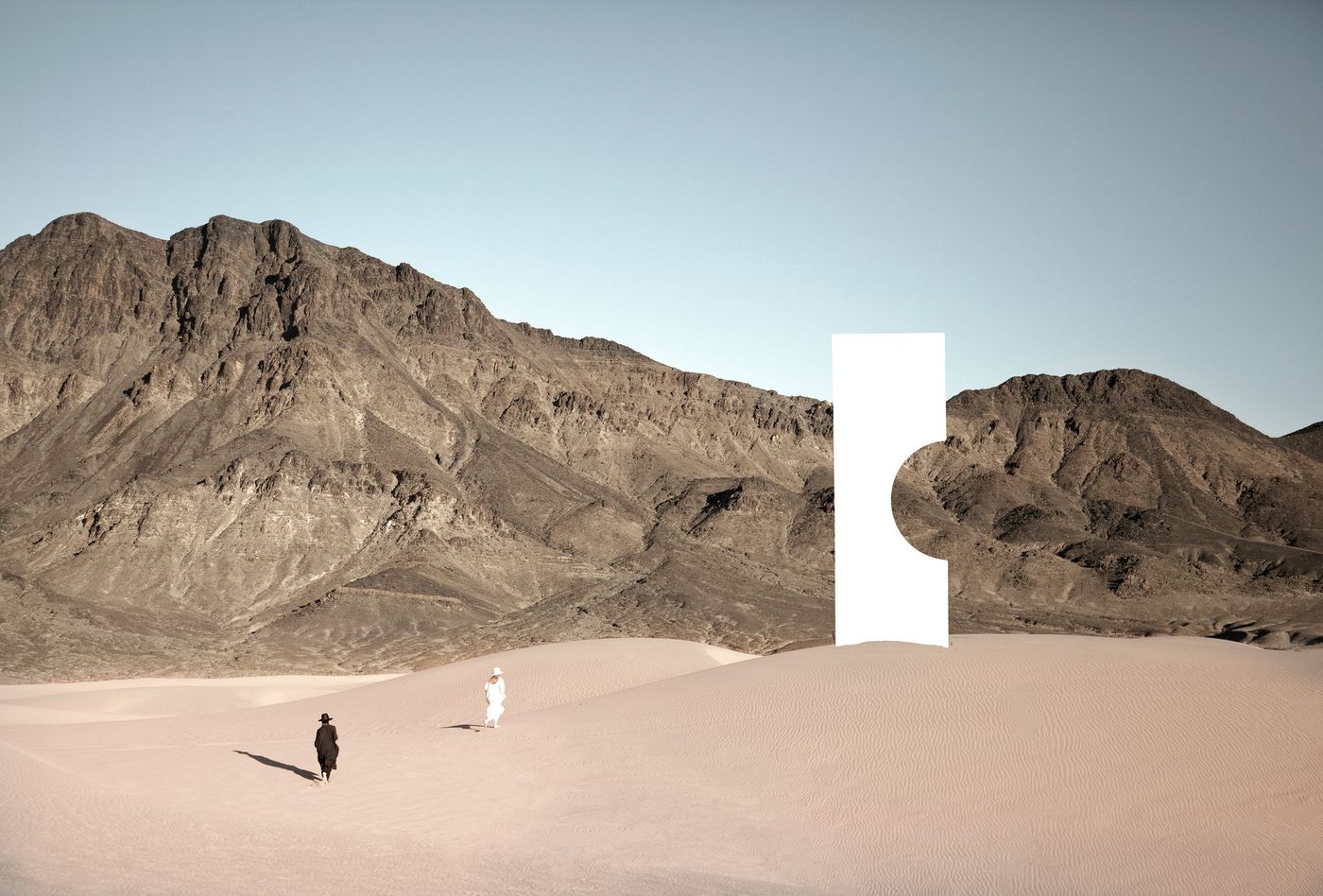
The Soulful Surrealism of Artist Petecia Le Fawnhawk
Words by Eric David
Location
To say that Los Angeles-based artist and creative director Petecia Le Fawnhawk is a multidisciplinary practitioner would be an understatement. From drawing, photo collage to land art to video, Le Fawnhawk’s work is fueled by creativity and guided by intuition, a combination made even more potent by the fact that she is completely self-taught. Whichever the medium, her work is distinguished by a soulful minimalism and a romantic surrealism, underpinned by a transcendental mission to morph her perception of reality according to her own sensibility. Based on her passion for the desert, one of the last places on the planet mankind has not yet interfered with, Le Fawnhawk’s dreamlike, stripped down settings channel nature’s wilderness as a paradigm of complete freedom from manmade constructs, be that cities or concepts, enabling us to grasp our place in the universe. But there is also a personal dimension to the artist's affinity for such barren landscapes which hark back to her nomadic upbringing in the Arizona desert. Yatzer recently spoke with Le Fawnhawk about her artistic practice, her inspirations and her latest work.
(Answers have been condensed and edited for clarity.)
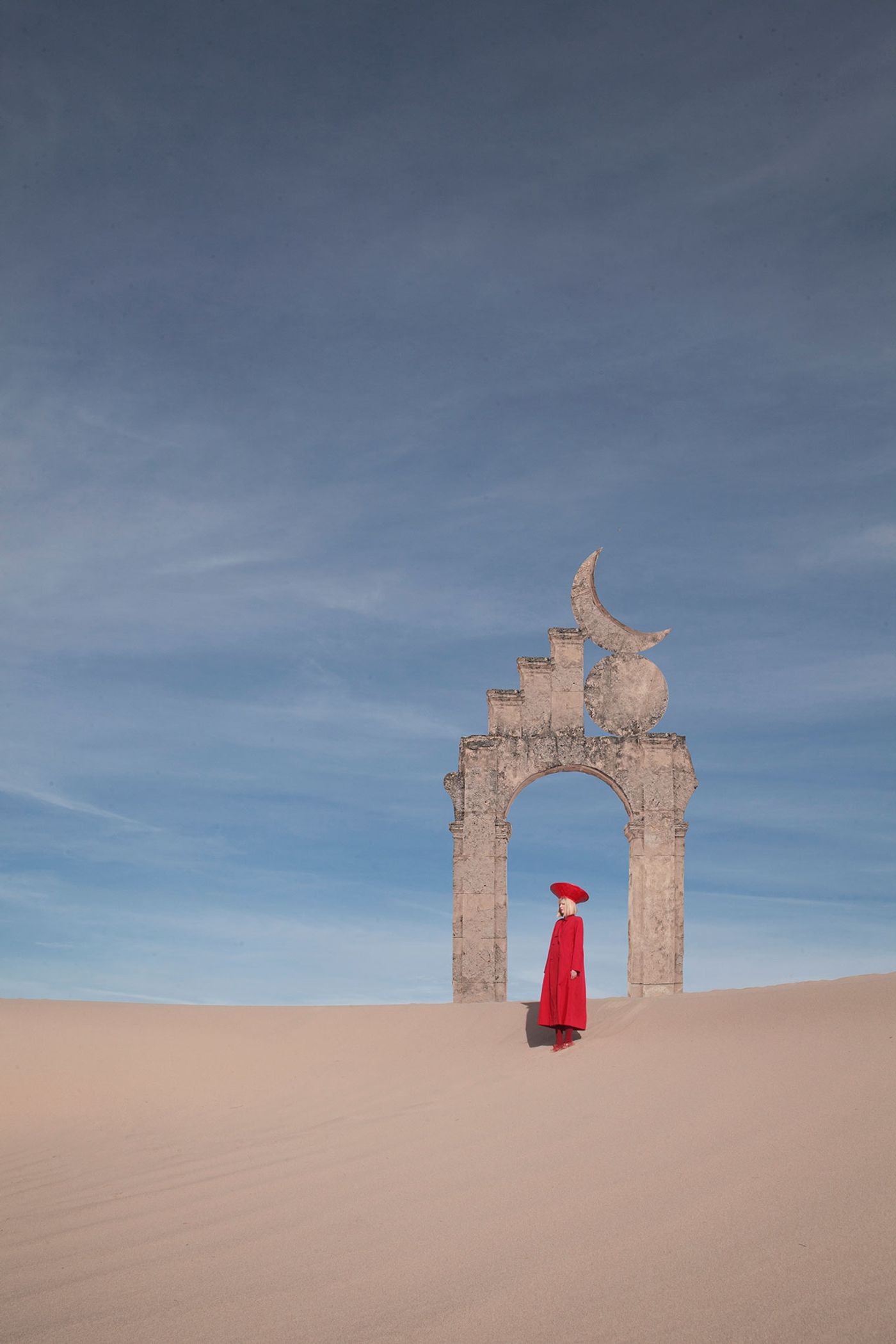
'Red dune alter me'. Photo © Petecia Le Fawnhawk.
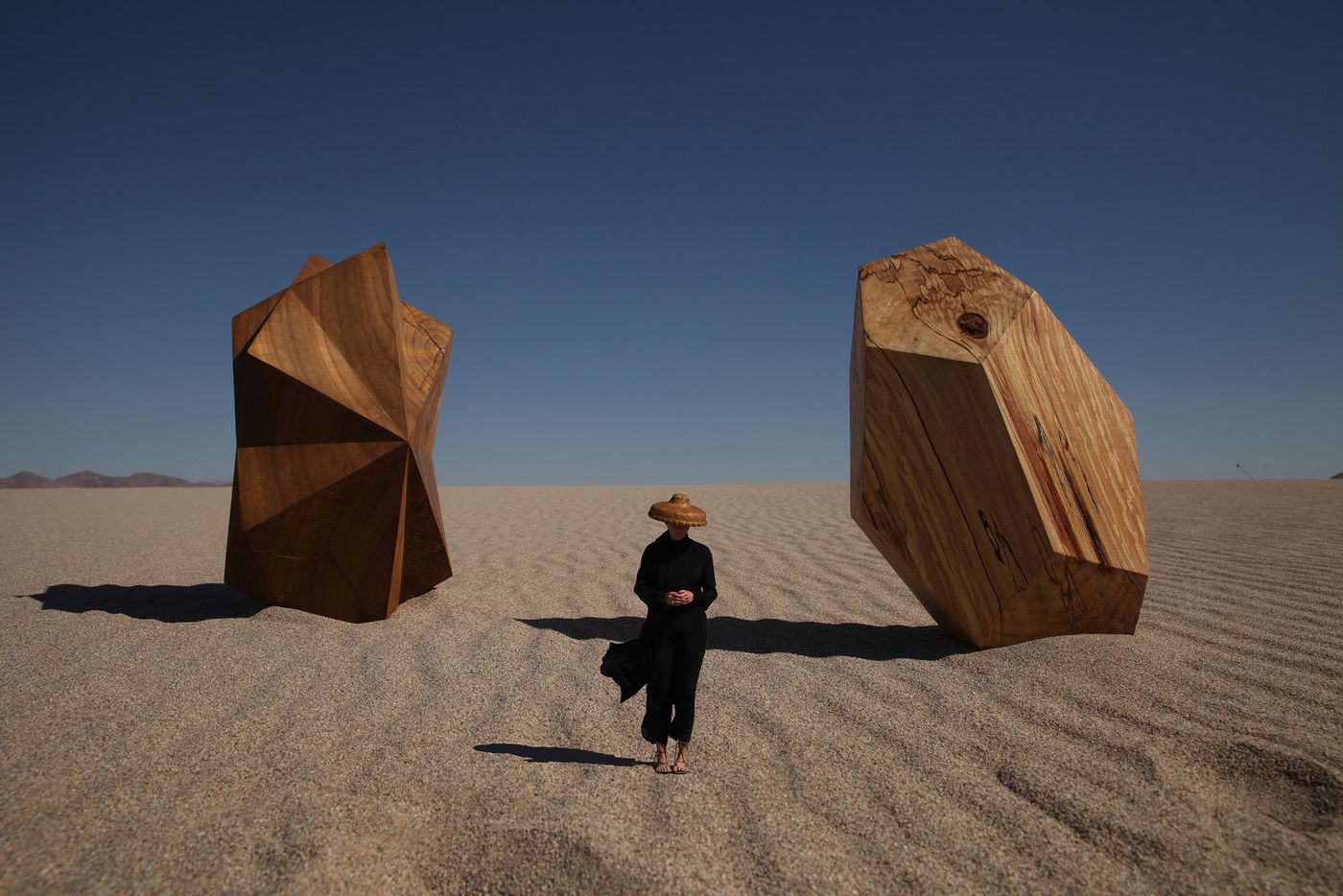
'Surrealism is destructive, but destructive only to the shackles limiting our vision'. Sculptures by Aleph Geddis. Photo © Petecia Le Fawnhawk.
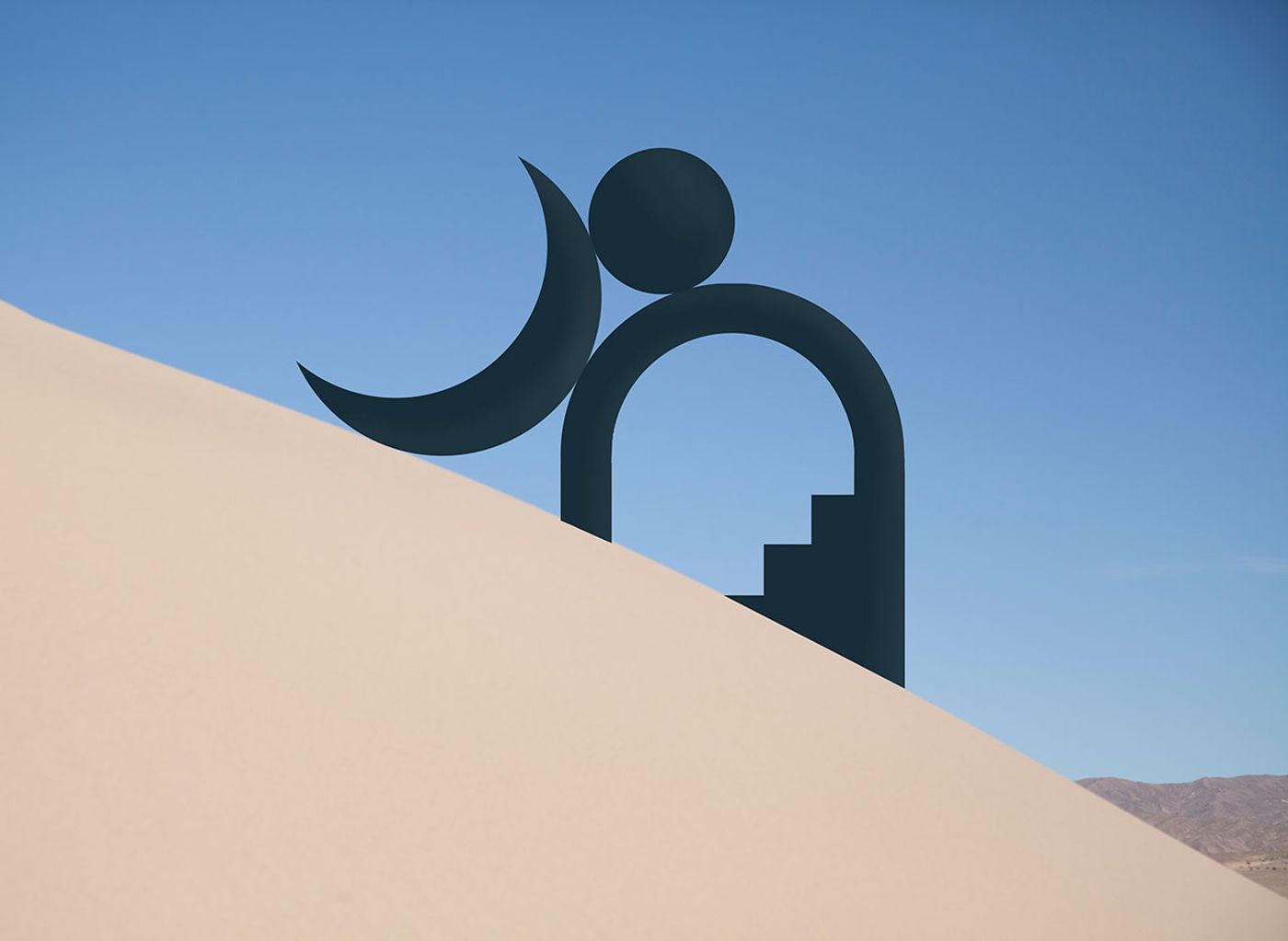
'Forms on Dune'. Photo © Petecia Le Fawnhawk.
What was the impetus to becoming an artist? Where you always creatively engaged as you were growing up?
I don’t recall “becoming” an artist, I’ve always been as I am. Acting on the creative impulse, following my curiosity and intuition with blind faith and full of heart.
Your artwork combines a soulful minimalism with a romantic surrealism. How did this transcendental sensibility evolve? Would you say it is a reflection of your personality?
I believe that the more we explore our inner wilderness, the more we are able to articulate the language and symbolism of our subconscious. I believe in my personal maturity and evolution, I have gained an intimate relationship with my intuitive self so that I may purely express the subtle inner workings of my soul. With that being said, yes, I believe my art is a reflection of the myriad of aspects of my being.
Your artistic practice spans many mediums. Does the choice of medium arise intuitively or is there a methodical process that underpins each new project?
I would say that the medium often arises depending on the creative impulse. It’s really whatever medium allows the vision to be expressed in its pure prototypical form.
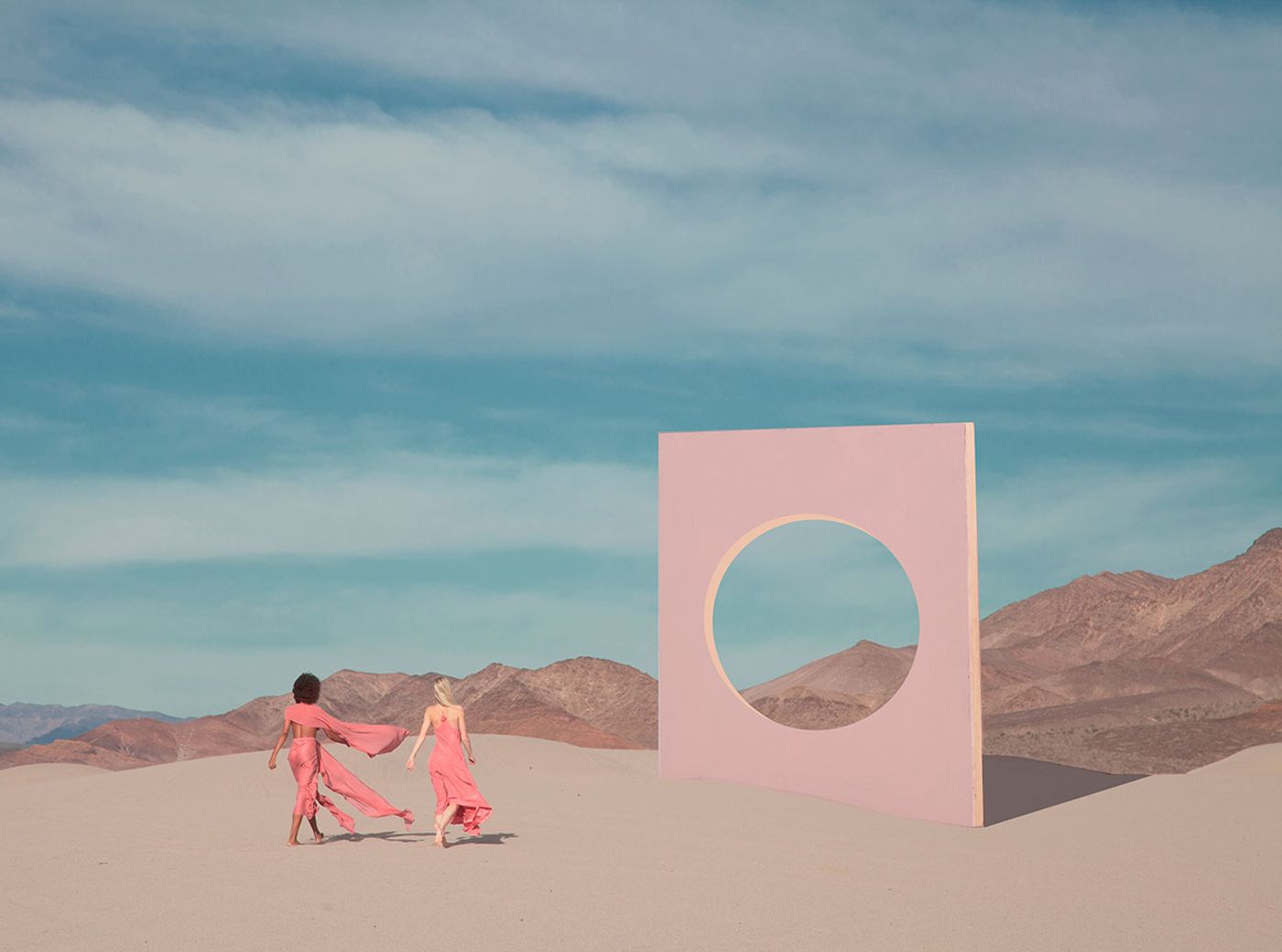
'Journey into womanhood'. Photo © Petecia Le Fawnhawk.
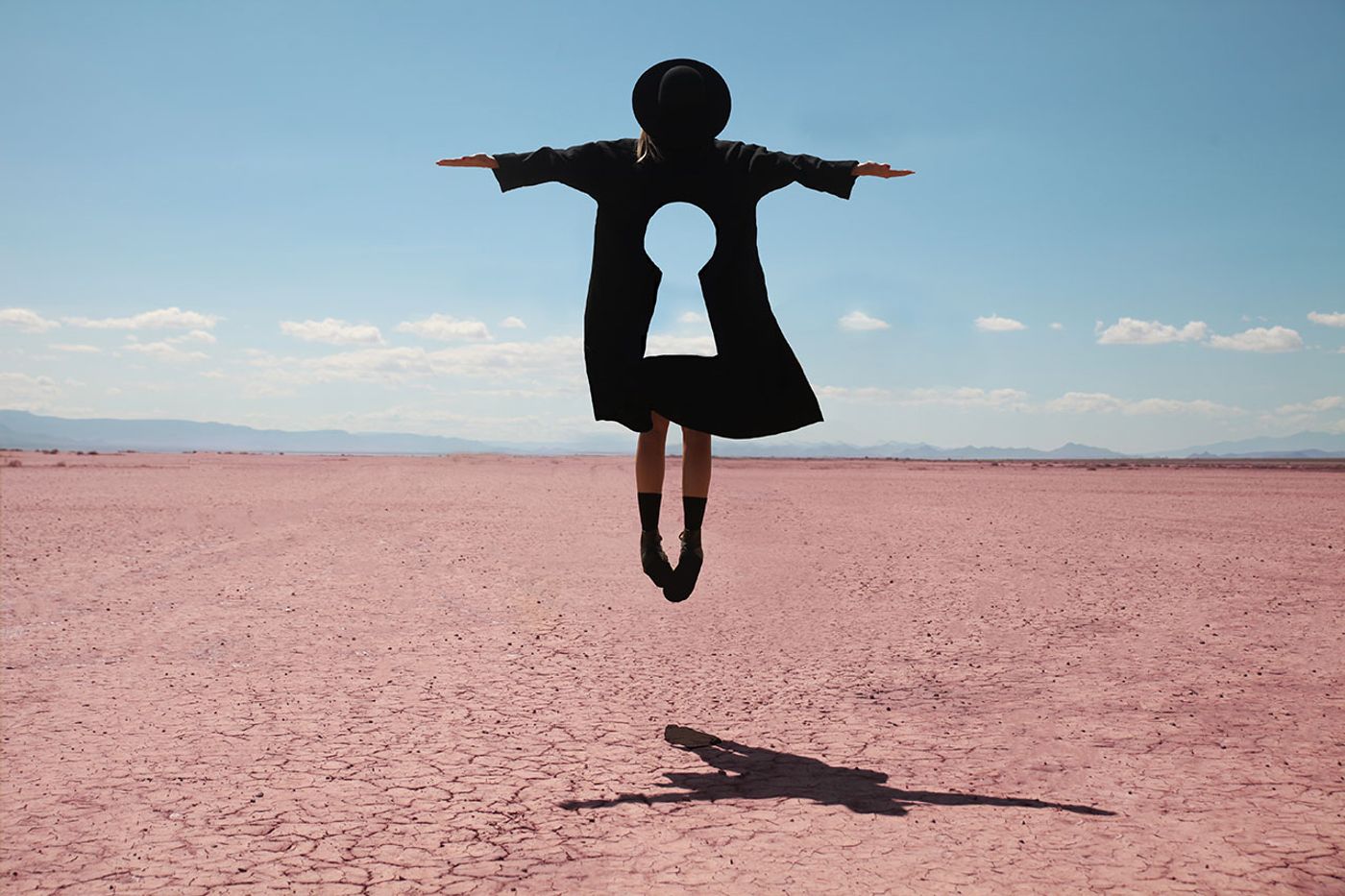
'Keyhole floating'. Photo © Petecia Le Fawnhawk.
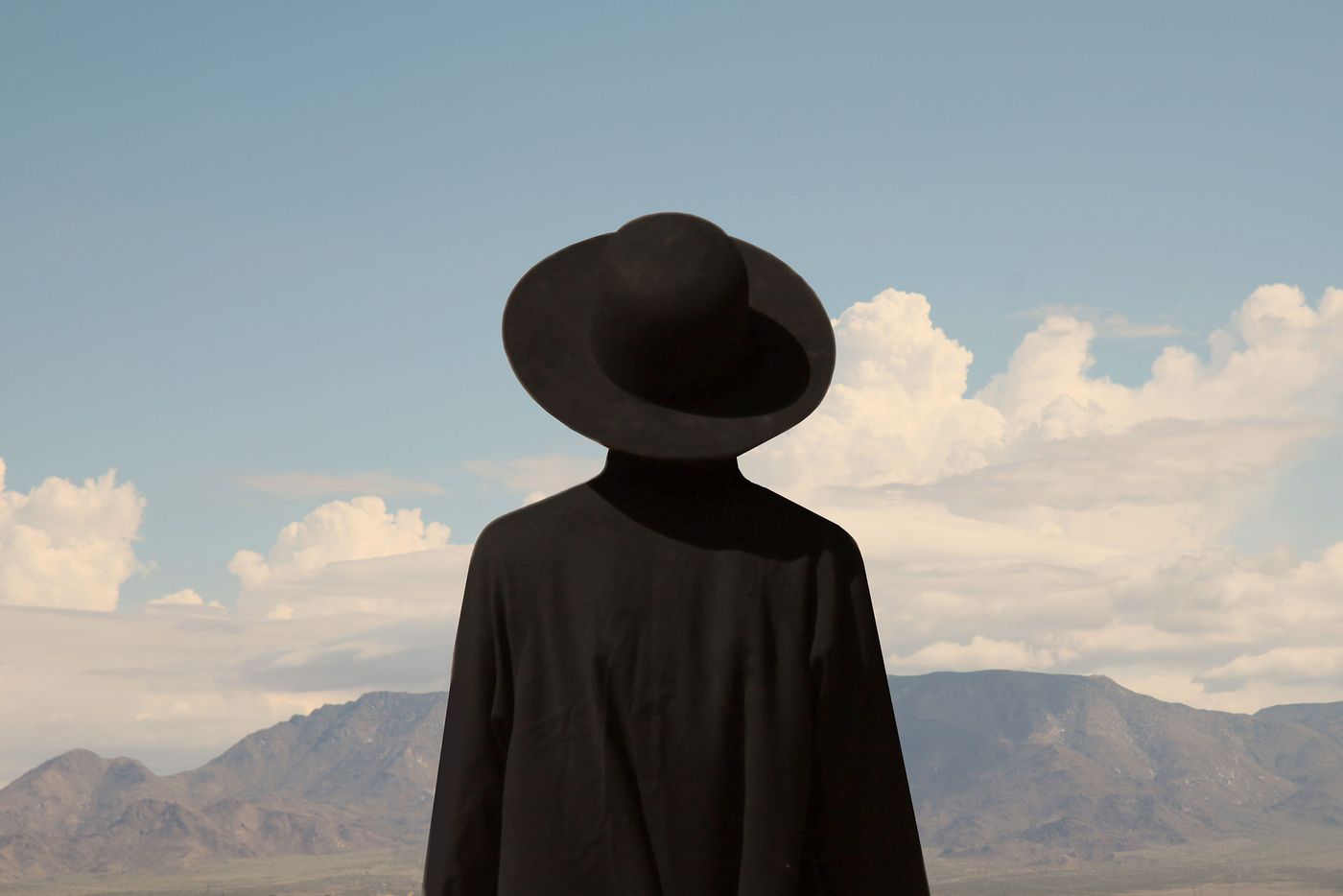
'Magritte morphism'. Photo inspired by René Magritte. © Petecia Le Fawnhawk.
Desert settings seem to be a predominant feature in your work. Why are you drawn to these kinds of “wild west” settings? Is the allure of the desert more aesthetic, conceptual or personal?
I was raised in the high desert of Arizona. It played as the backdrop to my burgeoning childhood imagination and continues to set the stage for my creative expressions. It is my teacher, my temple, my home.
Your photo collages feature several distinct geometric shapes, such as a crescent, a circle and an arch. How did this symbolic iconography evolve and what is its significance?
I was inspired by Brancusi’s desire to strip away the unnecessary to the essential nature of form. To seek truth in form, originating in nature, using platonic shapes and sacred geometry and the building blocks of nature as symbols; to give shape to the shapeless in a universal encryption of the subconscious that allows itself to be perceived and understood uniquely by the viewer.
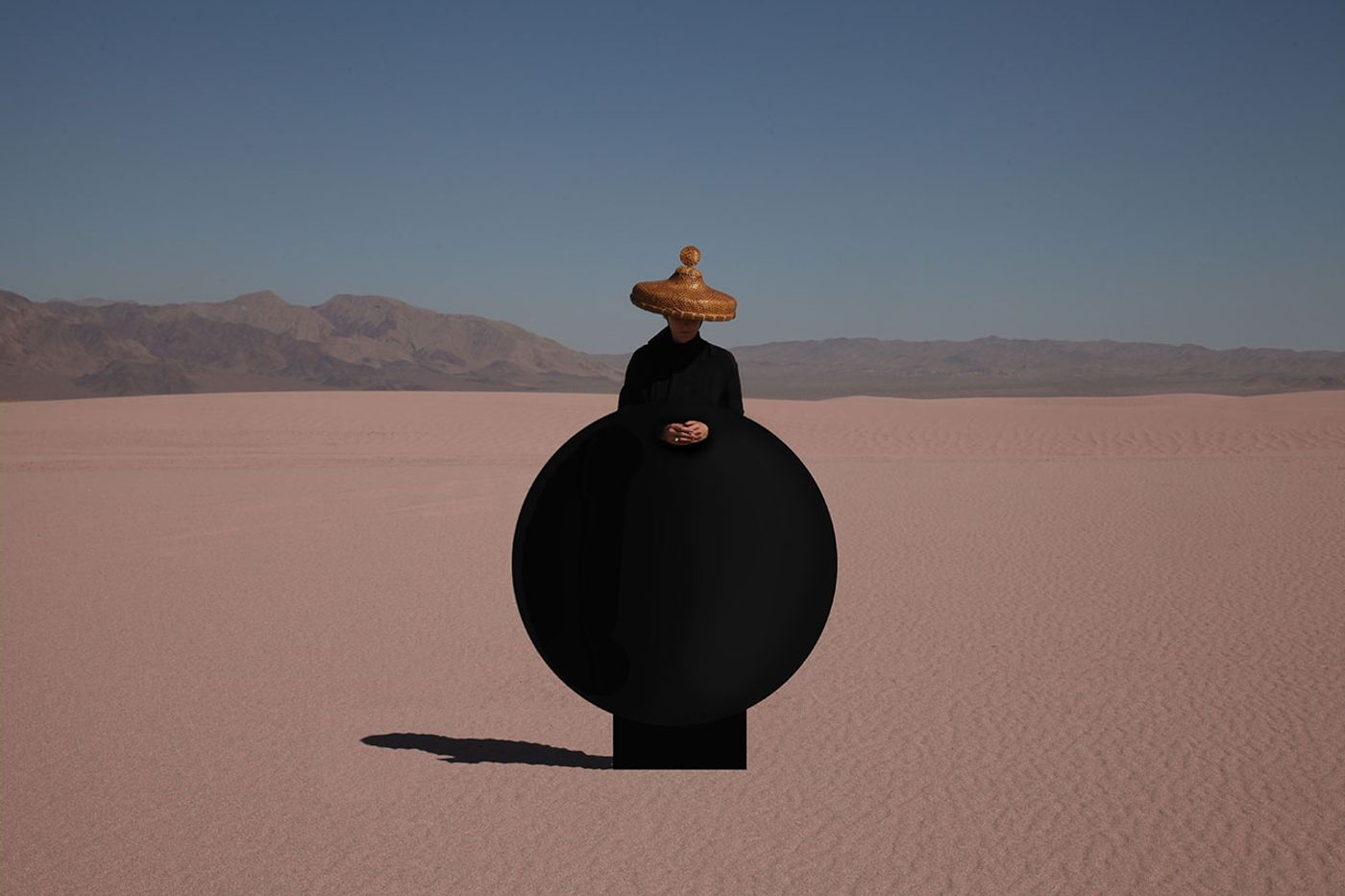
'Orbital'. Photo © Petecia Le Fawnhawk.
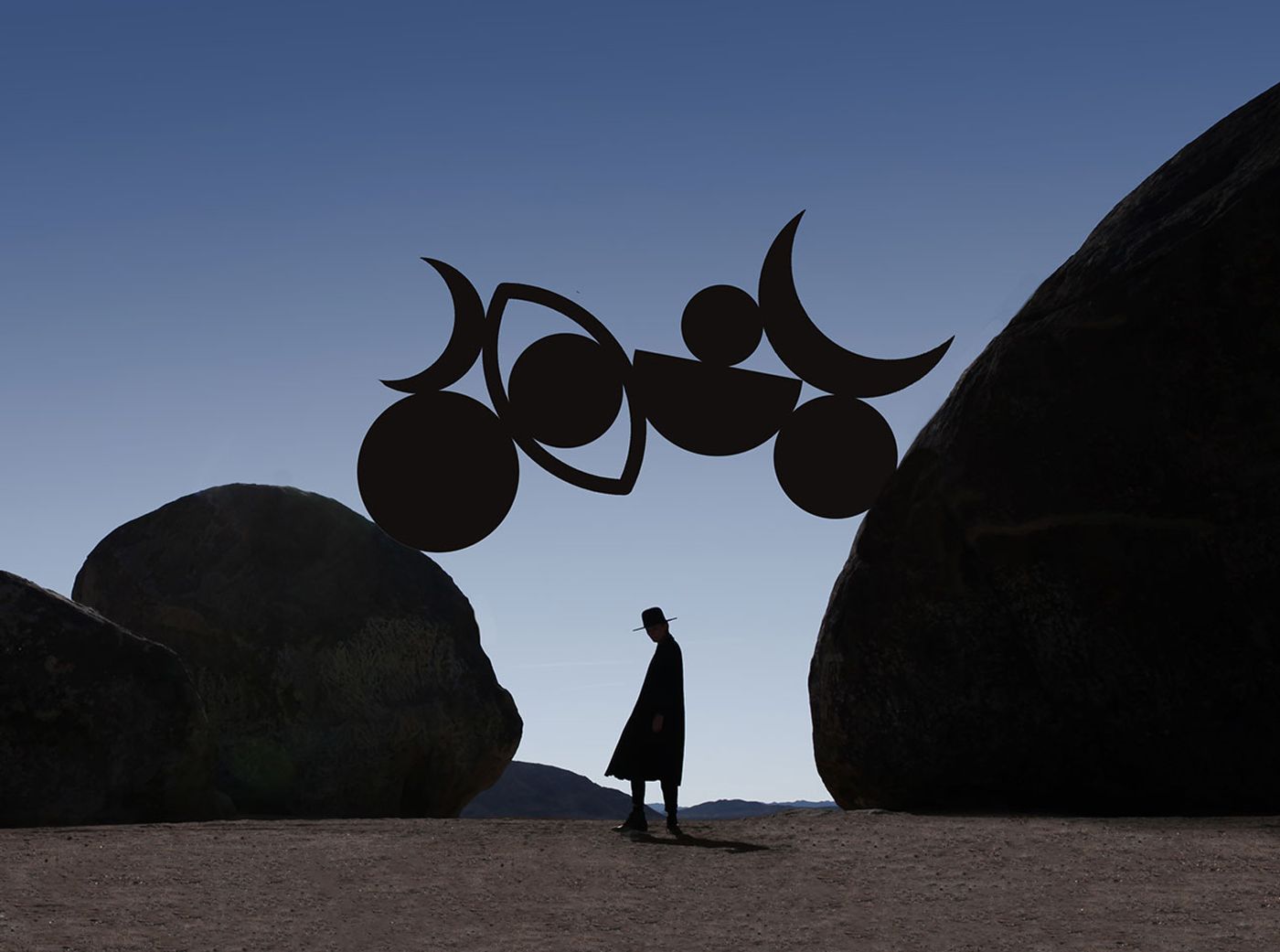
'The Philosopher's Arch'. Photo © Petecia Le Fawnhawk.
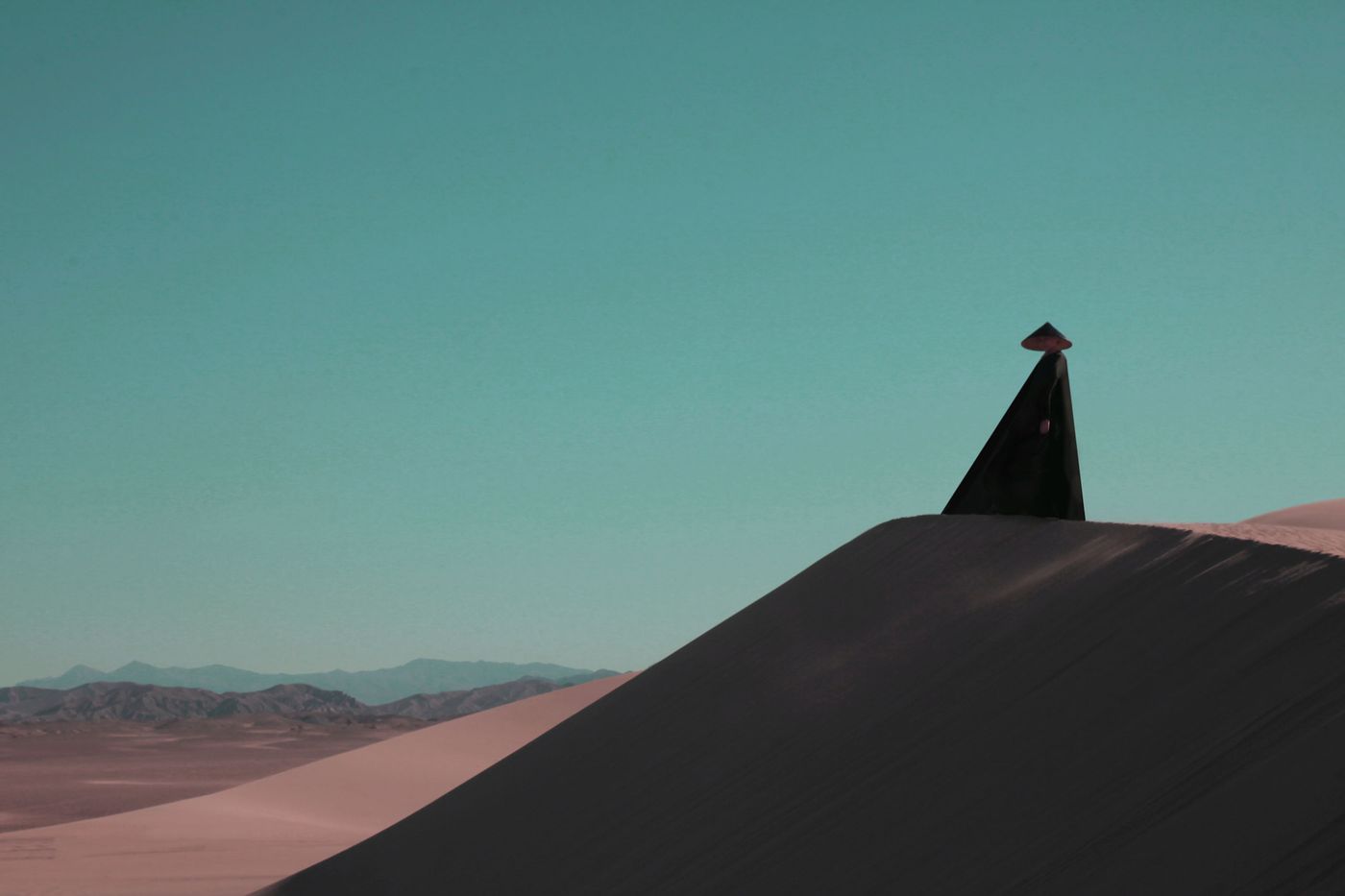
'Sand dune oracle'. Photo © Petecia Le Fawnhawk.
The ØDE film series is impressive in its haunting combination of brutalism, romanticism and the uncanny. What was the inspiration behind the series? What are you trying to convey?
ØDE was a collaboration with friend and photographer, Eliot Lee Hazel. We share a brutalism, romanticism and dystopia. ØDE means desolate or deserted in Norse. It harkens to the feeling we must all feel, alone… navigating our way through this strange modern world. Alienated from our origins… the protagonist shares this sentiment with the only other living specimen of nature, the bonsai.
Where was the series filmed? How did you select the location and why have you chosen to film it in black and white?
We did an extensive scout for the most brutalist architectural sites in and around Los Angeles, like The Salk Institute and the Geisel Library to name a couple. Black and White was chosen to give it a stark, melancholy and timeless appeal.
Le Fawnhawk + Eliot Lee Hazel for STANDARDVISION
ØDE (Part 1) "A monochromatic fashion tale played out in a four-fold Brutalist scenes." Exhibited in Downtown Los Angeles on Standard Vision's Digital media Billboard for November 2016.
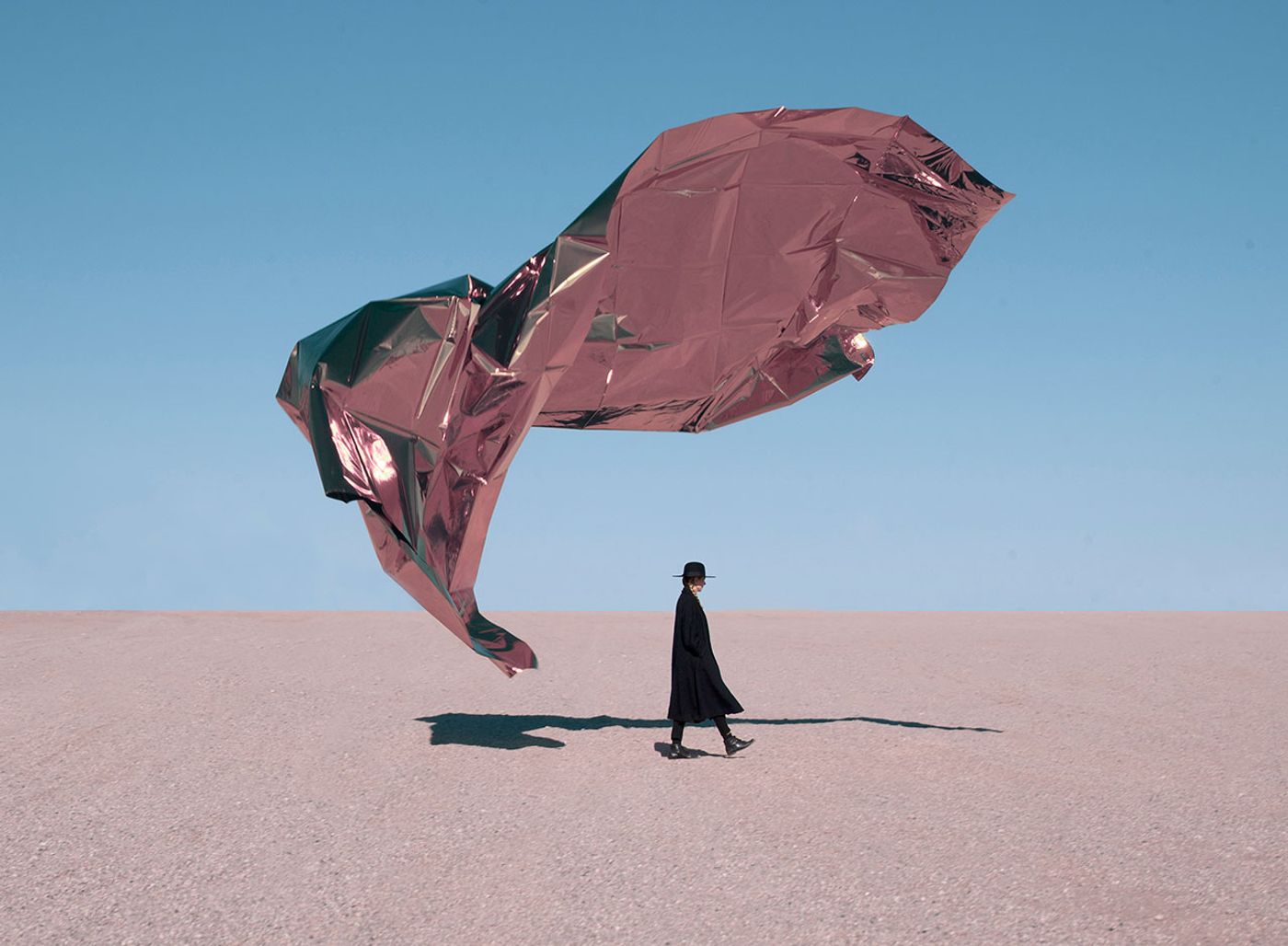
'Some Keep Curious Friends'. Photo © Petecia Le Fawnhawk.
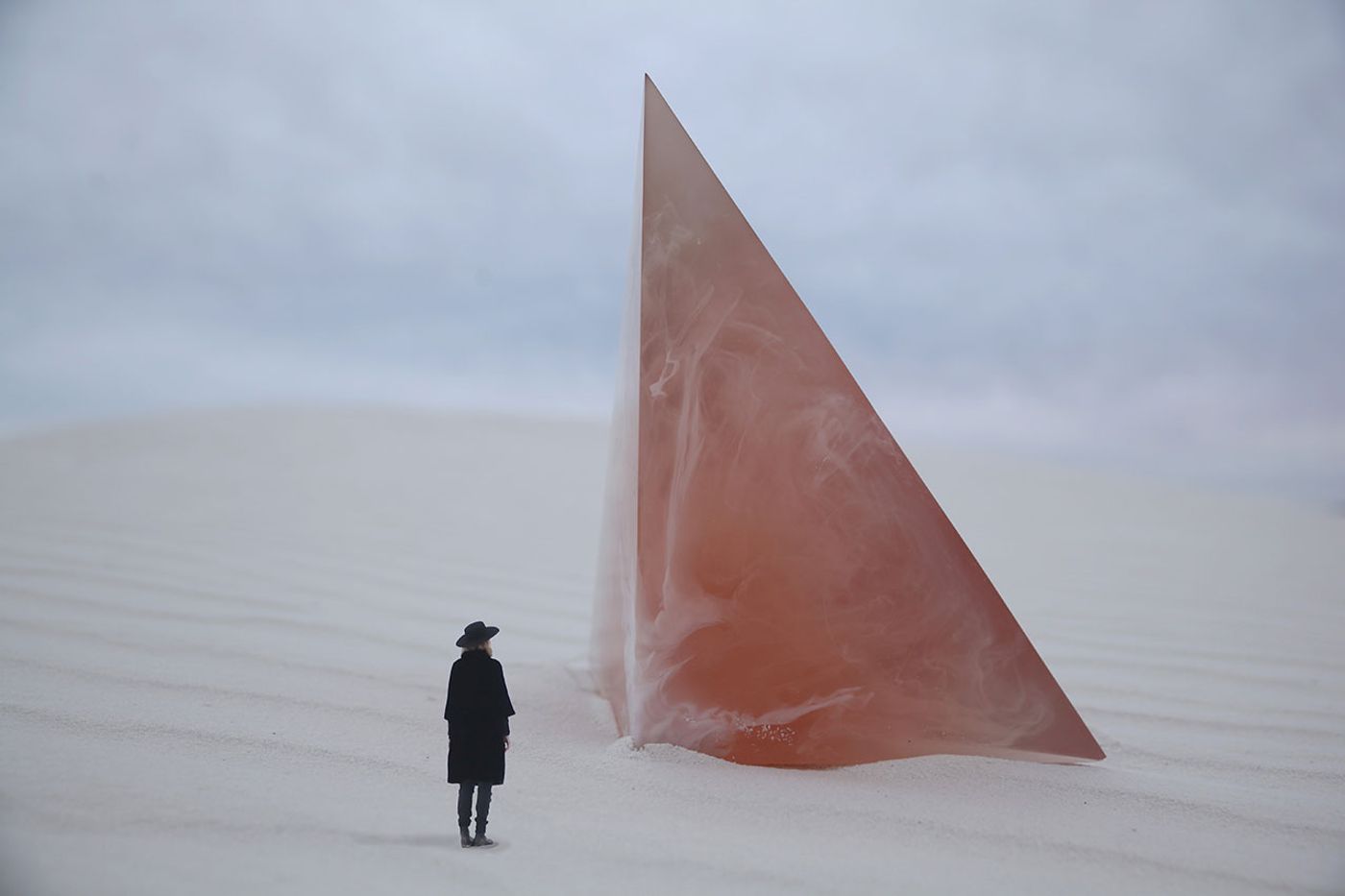
'Pilgrimage to the Sunset Portal'. Sculpture by J.S. Nero. Photo © Petecia Le Fawnhawk.
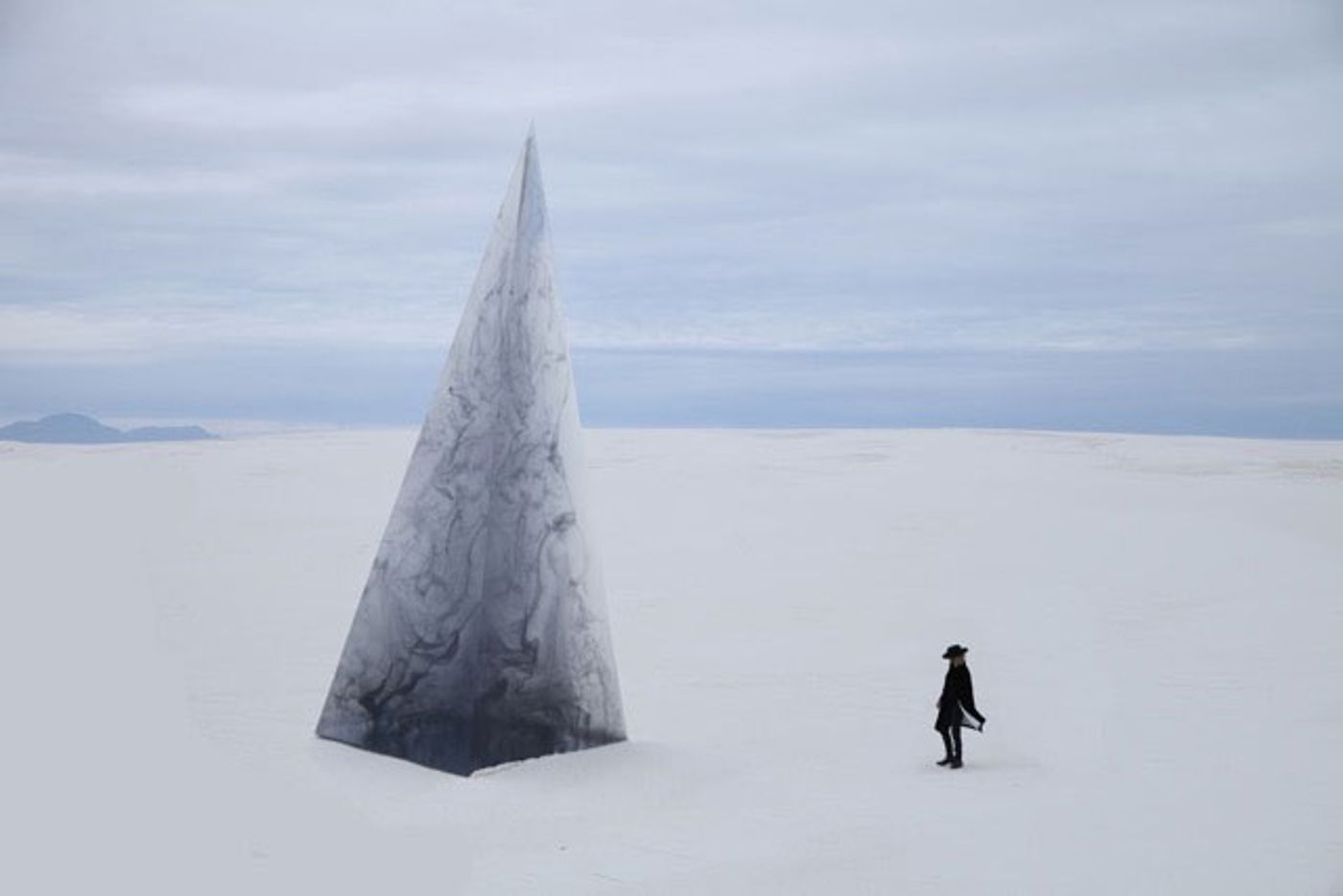
'Pilgrimage to the Storm Portal'. Sculpture by J.S. Nero. Photo © Petecia Le Fawnhawk.
You are married to artist Mark Maggiori with whom you frequently collaborate. What are the challenges and the rewards of working together with your husband?
Yes, my true love and creative soul mate. We used to work together professionally and that posed quite the challenge, but now that we focus separately on our own professions, when we do come together to collaborate, it’s out of passion and personal reward. We both challenge each other in different ways and we respect and admire each other, so welcome one another’s input. Our subject matter mostly resides in the wilderness and the desert, so we often go together on road trips for inspiration and material. It’s our happy place; it’s where we fell in love and where we love to return to create as often as we can.
What are you working on right now? Any exhibitions under way?
Yes! I’ve spent the past couple of years developing my artistic voice and body of work and can safely say I’m now ready to exhibit it in the real world! I’m putting together a print show, a collection of paintings and hope to erect my first site specific land art piece named Essence of Form Accumulated. I am also working on a new desert Element’s series called The Desert Unseen. Just writing this, reminds me of all the exciting things ahead and makes me want to get back to work! So off I go!
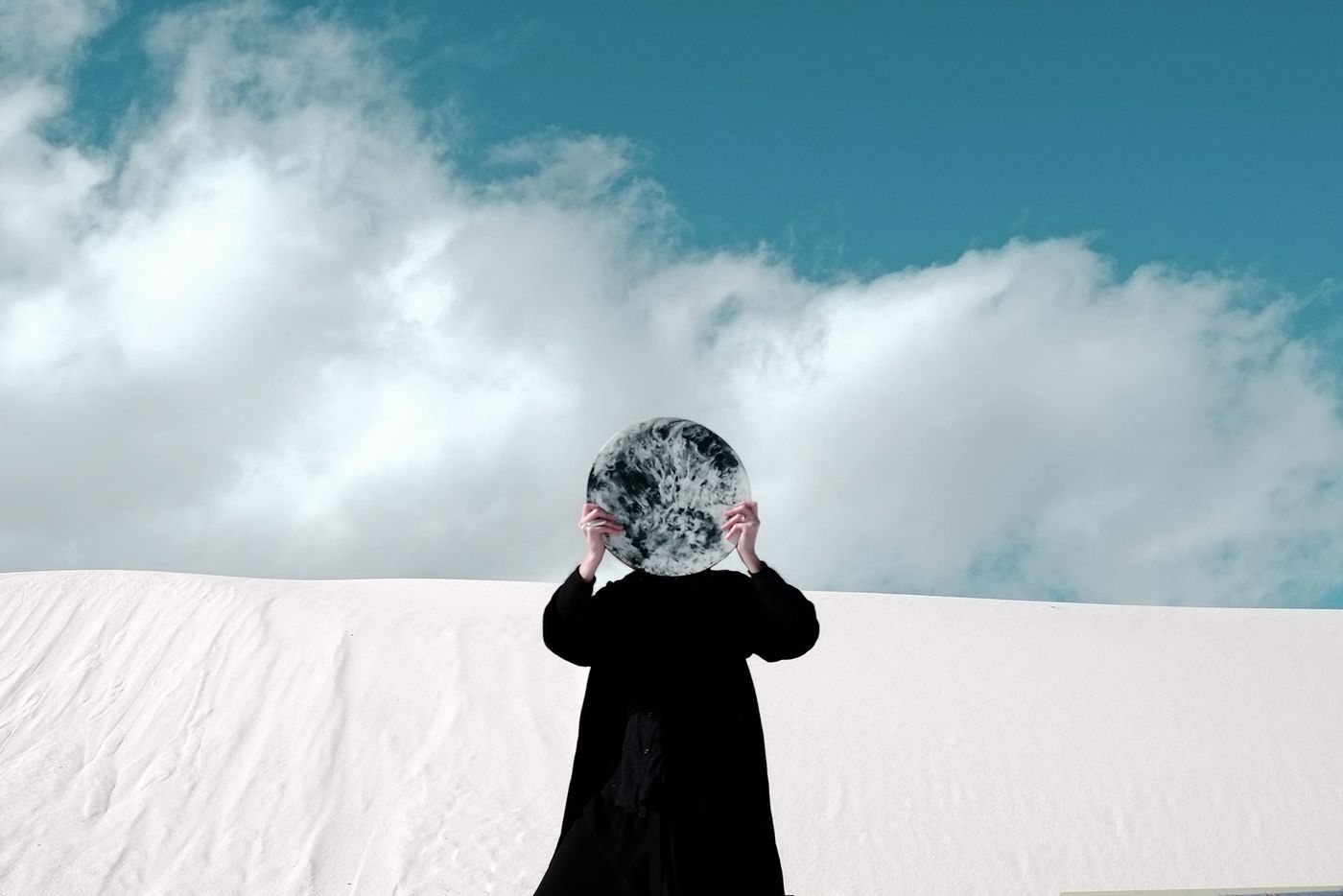
'Black moon pink dune'. In collaboration with Mark Maggiori. Sculpture by J.S. Nero. Photo © Petecia Le Fawnhawk.
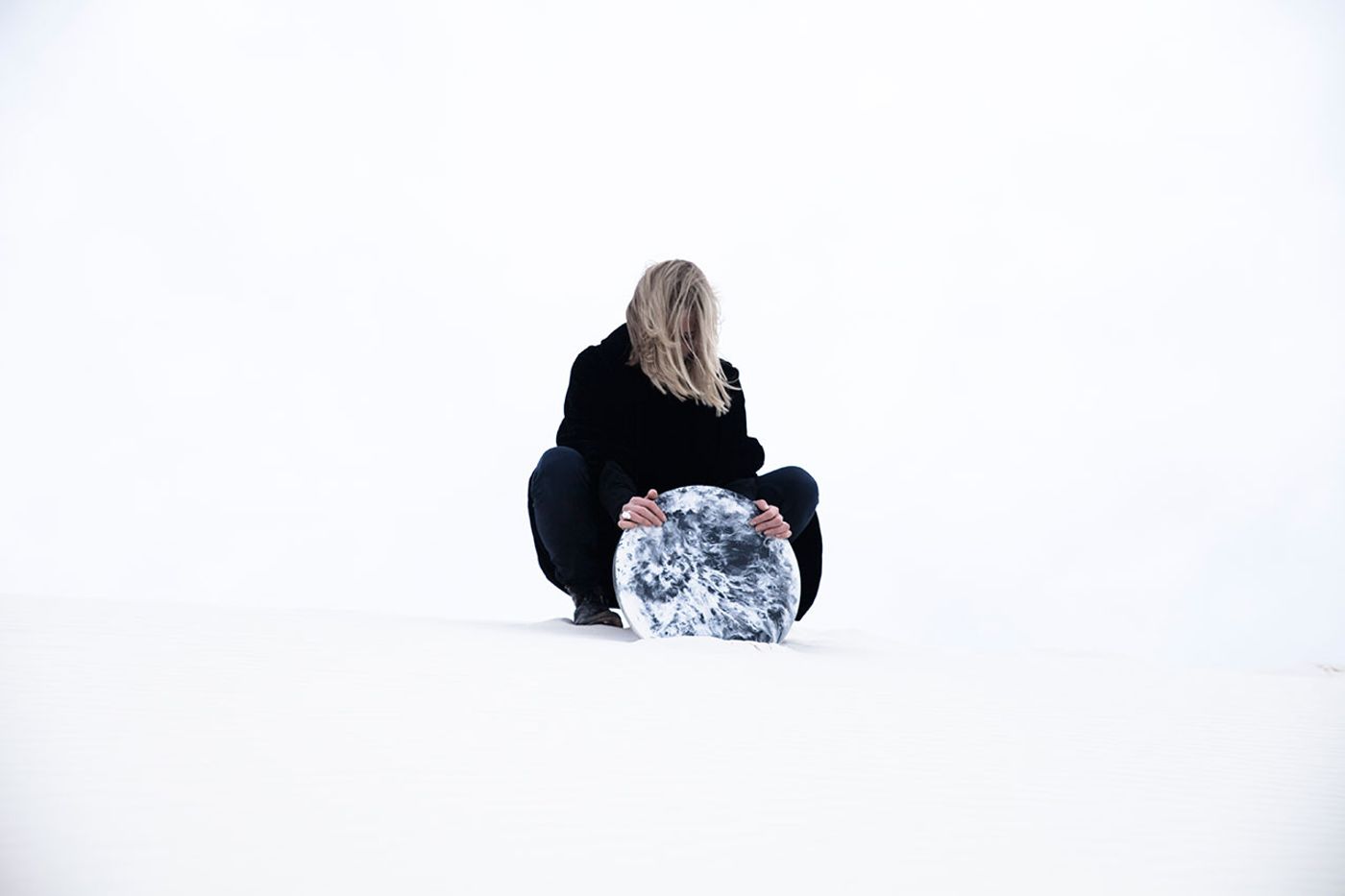
'Storm portal'. In collaboration with Mark Maggiori. Sculpture by J.S. Nero. Photo © Petecia Le Fawnhawk.
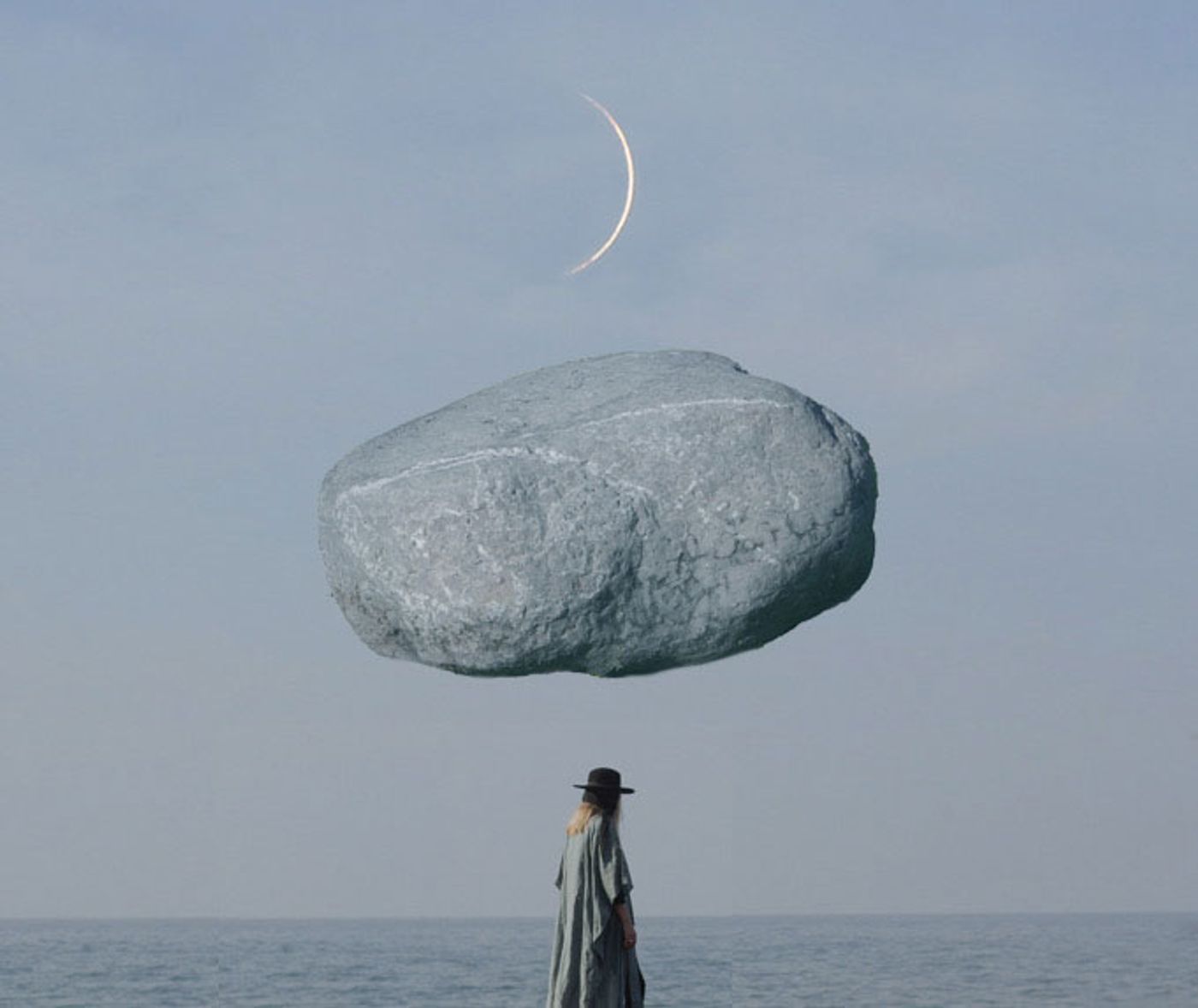
'Magritte Morphism'. Photo collage inspired by René Magritte. © Petecia Le Fawnhawk.